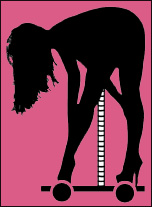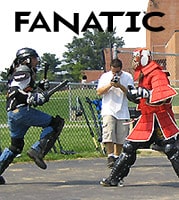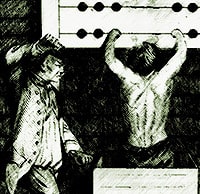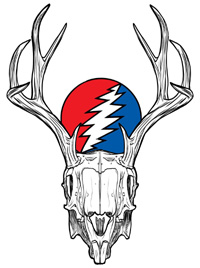I would like to cite The Women Warriors from Ronald Thomas West's book, Cosmos and Consciousness, in noting the antiquity of female involvement in war, which has always been an extreme minority level of participation, but does bear on the general thesis of a Dread Grace, that those societys who respect the opinion of women in regards to warfare, have generally fielded more effective fighting forces than have strictly patriarchal societies. For the most part this is limited to encouragement [cheer leaders] and criticism [Mom telling you that you should not have let Jake the Snake sign you to fight Tyson on your pro debut].
However, when conditions permit [not in a Greek Phalnx or Norse shield wall] but particularly where horsemanship is concerned [the Amazons where Scythian women] are concerned, women have been able to contribute, particularly in tribal wars where manpower is short and the nature of war is to use guile and craft and not risk casualties. Coming from an agrarian-industrial perspective, men of European extraction tend to see warrior roles as an emasculated farmer sees them, consisting of lifting great weights, pressing hard, in other words, of being an ancient hoplite, a breach loader on an artillery team, or a modern Spec Ops soldier hauling 200 pounds of gear.
For a primal society, without replacements, rescuing a wounded warrior is a very big deal, where modern militaries could care less—though pretend otherwise—as their is more meat where he came from. So, a woman acting as a field medic, or as a jockey retreavinging wounded warriors,. is a very important thing.
Also whenever warfare diverges from close combat some unique women rise to be counted among the top men, as Ronald notes in his book. Also, of interest, is the fact that Ronald was saved on two occasions by female intelligence operatives working for Spanish law enforecement, so he knows that women can be effective in such roles. What is most notable about Ronalld's chronicle of Native American warrior women is that they are given the choice of living as a man or as a woman. In contrast, our society pretends that one can live as a man and a woman—indeed pretends and legislates that there is no difference—and makes no clear delineation, rendering female participation in the U.S. military almost exclusively negative.
This is a great sickness among us. I have two fellow writers who do comic strips and they discuss their characters and story lines with me. both were raised by women. both are unable to envision a man as a warrior, with all of their warrior characters being female and their male partners physically disinclined for combat.
Some notes on Natïve American women involved in warfare:
1. The Algonquin of the eastern woodlands, predominantly coastal woodland dwelling people with an often patriarchal social structure who had no use for introduced horses in war, and relied on heavy draw bows and heavy hand weaponry, had no position for women in war. However, the Catawba people had a female chief in 1541, Pocahontas swayed her father in the matter of Captain Smith in 1607, Metacomet was supported by a female chief in 1675, and during the Shawnee rearguard action against the Americans in the 1780s a woman known as The Grenadier Squaw, defected from the Shawnees with her followers and preached peace with the Whiteman. Even in the male-dominated
2. The Iroquois Confederacy went to war on the side of Britain against the rebellious colonies, largely due to agitation by their women, who, although they did not take part in warfare, had a hand in the election off war chiefs. These tribes had more military success than any Amerindians other than the Apache and Seminole.
3. During their feud with Liver-Eating Johnson, the Crow were reportedly harassed by Sioux warriors at trading posts for letting their women have too great a say in the affairs of men.
4. During the suppression of the Yaqui people in Mexico around 1900, that ill-fated tribe had a famous female warrior who was renown for being physically stronger than the men.
5. Just after the foundation of the trading post that would become Seattle Washington, the fur company operators were astonished to find a woman living nomadically with a wife and dressing like a man.
6. With the many languages of Native North America, women, with their more elastic language aptitude, made crucial contributions to war and peace as translators.
7. Last but not least, Geronimo kept 5,000 American soldiers at bay with a handful of boys and a bunch of ugly women. The women might not have been fighters, but they surely made sure the fighters only had to carry their weapons as the people moved from camp to camp. A Roman Soldier would have kissed you if you gave him an Apache woman to haul all of his donkey-load of gear around while he hunted giant Germans.
For those masculinity advocates starting up scrap-built tribes, looking at the flexibility of primitive American Indians and primitive Europeans in regard to gender roles may be useful, especially with the shortage of gender-fit males in the current emasculated population.











>For a primal society, without replacements, rescuing a wounded warrior is a very big deal, where modern militaries could care less—though pretend otherwise—as their is more meat where he came from
Not true. Modern militaries dedicate huge amounts of resources to MEDEVAC/CASEVAC.
The most elite guys in the Air Force are not pilots, who are glorified truck drivers mostly. The most elite guys are CCTs, who are on the ground calling in airstrikes and managing the airspace, and PJs, whose job it is to rescue the wounded.